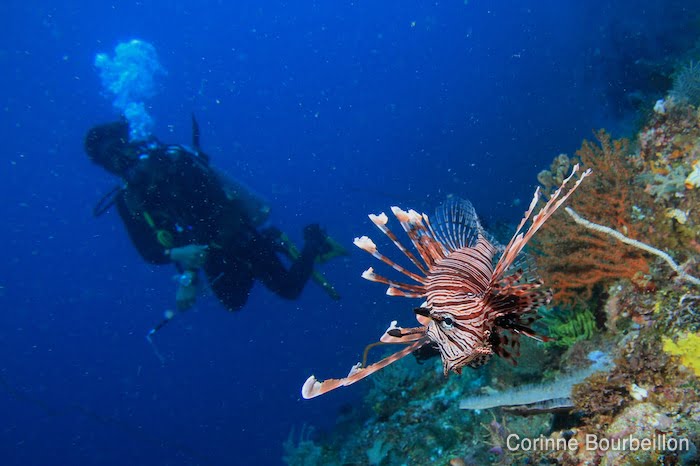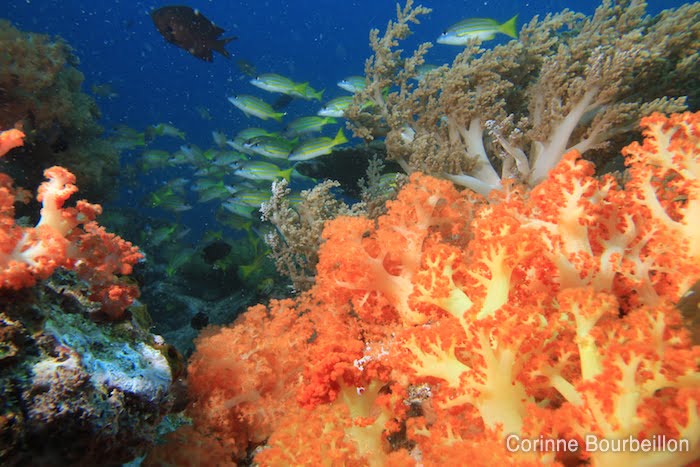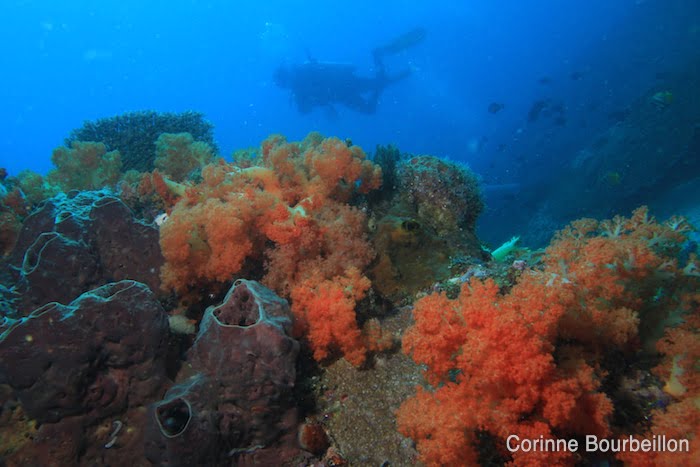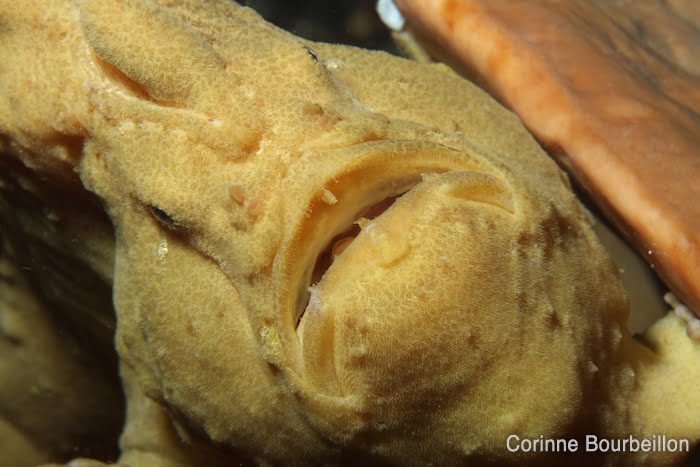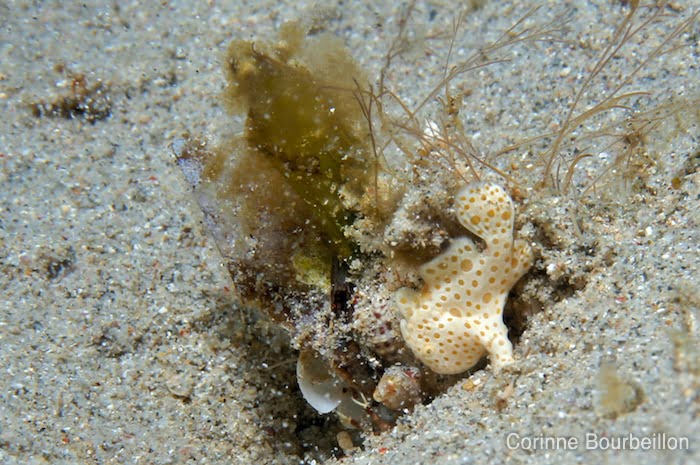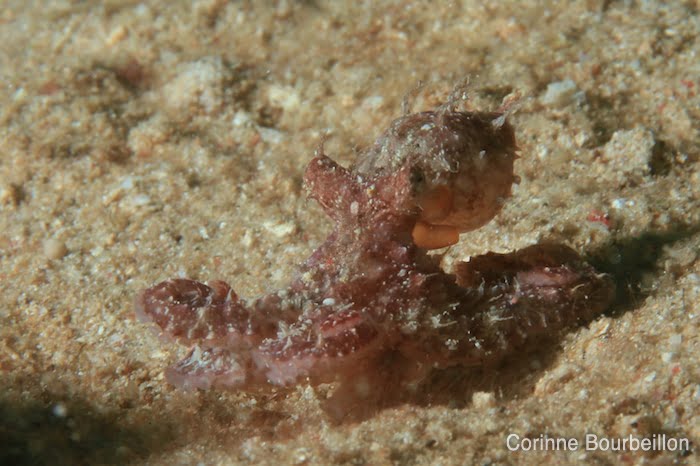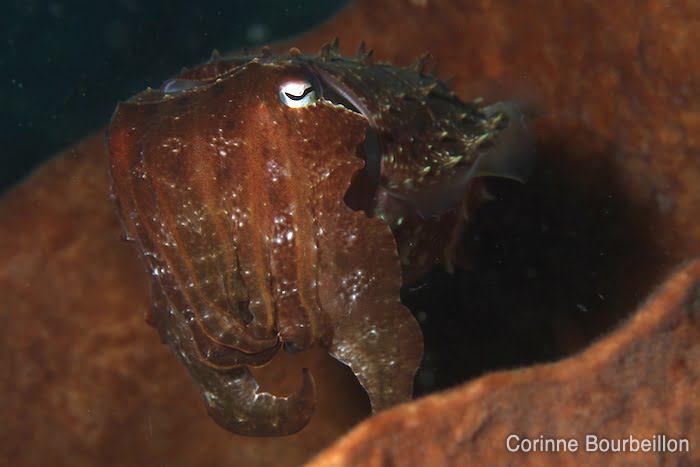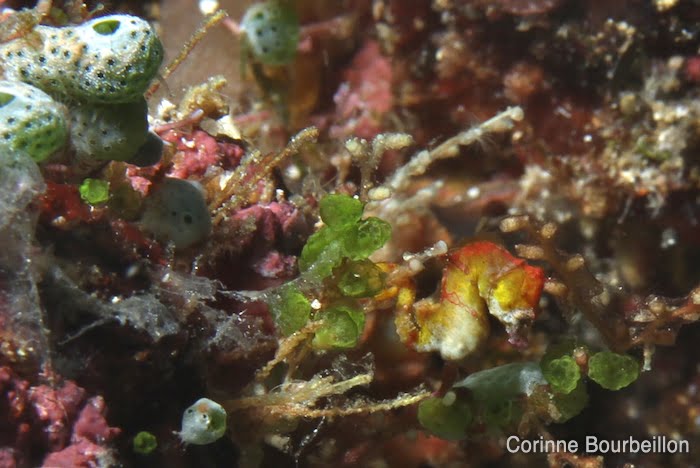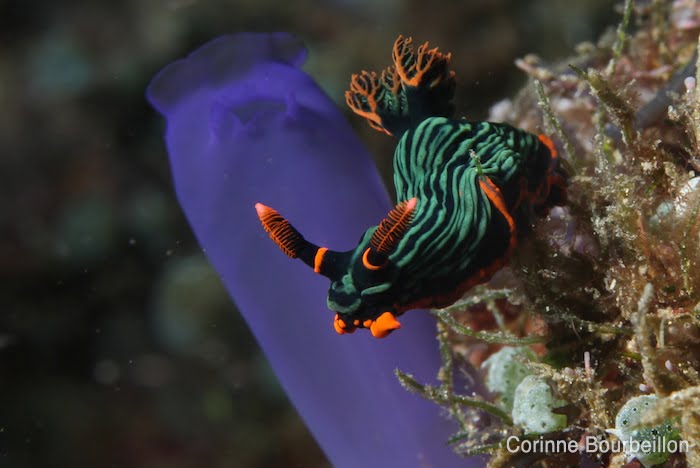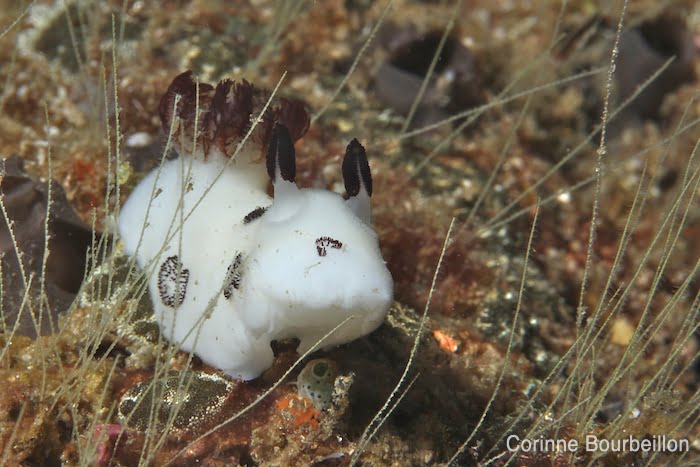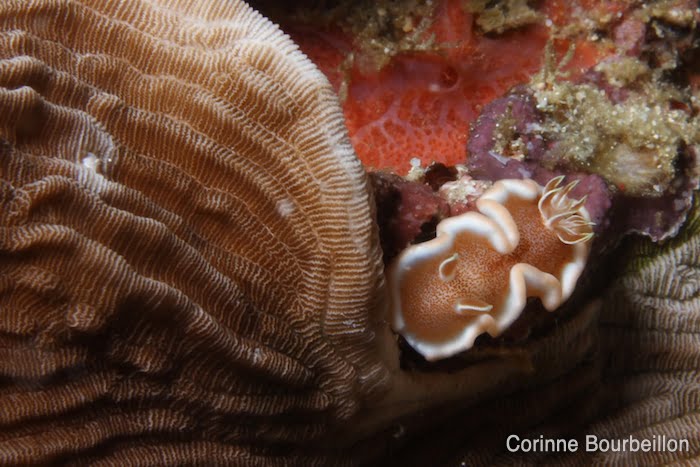Indonesia: Sulawesi - July 2010
Dear English-speaking readers, this page is an automatic translation of an article originally written in French. I apologise for any strange sentences and funny mistakes that may have resulted. If you read French, click on the French flag below to access the original, correct text:
In Indonesia, the word "biodiversity" makes sense. Here in the Sea of Celebes, the underwater world teems with bizarre and fascinating creatures, often tiny.
The beautiful reefs of Bangka Island
Since I have been taking pictures underwater, I have been fascinated by these little creatures that inhabit the tropical reefs. Each time I dive, I am amazed. Like a kid, I never get tired of it.
The reefs of North Sulawesi are definitely worth a visit. Compared to the island of BunakenThe Bangka sites, where I was three years ago, are interesting because they allow you to mix different types of diving:
→ the "Muck-dive." on a sandy bottom, where we carefully scan the coral and seaweed debris, the holes and bumps, to find the bugs that hide there;
→ the classic ride along the drop offs, rich in groves of colorful soft corals and schools of spinning fish.
I decided not to go back to Bunaken this year. The place is becoming a bit too famous and crowded. Resorts have developed on the island and it seems that there are more divers and trainee divers than fish underwater...
Bangka is definitely more peaceful, and especially its funds are better preserved. And at MurexThere are great guides, with lynx eyes under water...
Here are the small people of the reef, crossed around the Bangka. You just have to click once on a picture : it will open in big size, with its caption, and you will be able to navigate from a picture to another, with the arrows of the keyboard... Have a nice trip !
Toadfish
They are colloquially known as frog-fish or toadfish, because of the English name "frog-fish". It suits them well. The family to which they belong is the antennae family. I like them a lot, these shapeless fish that can hardly swim and that look like nothing but the sponges they like to hide on.
I didn't take the time to look through the identification books to find the name of each one, but my favorite is the little toadfish called "clown" (3rd picture below). Not very cooperative, it remained clinging to its piece of coral without deigning to show me its best profile. The bottom one, with its small orange spots, is a new one for me: a tiny fish, which I had never met before.
Small cuttlefish and mini octopus
All these bugs change their appearance and color in an instant, when they feel threatened or try to blend in with the environment. The effect is always striking.
The astonishing little flaming cuttlefish (2nd photo) bristles with pustules and seems to be covered with waves of fire. One could stay for hours admiring the infinite variations of its dress, which gives the impression of undulating permanently.
Seahorses and cousins
How far away my very first encounter with the tiny pygmy seahorse, smaller than the nail on my little finger, seems. And what progress, since then this first picture of 2008 not very clear, and the following…
The little sea horses, and their cousins the "ghost-pipe fishes", especially the "ornated ghost-pipe fishes", are a pleasure of macro photography.

Bunch of nudibranchs
Nudibranchs? I hear it's a girl thing. Helena, Valérie, Malene are like me They love these small sea slugs, which can take on endless shapes and colors.
Here is a small bouquet harvested in the waters of Bangka. And I'm counting on Anthonywho is not a girl but who likes nudis a lot too, to give us their little scientific name... 😉
😉


